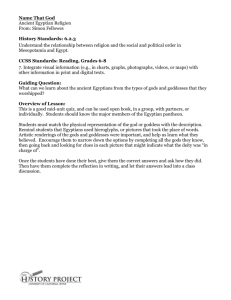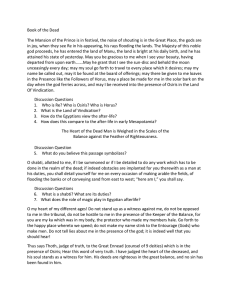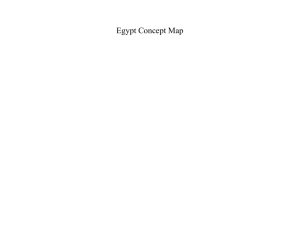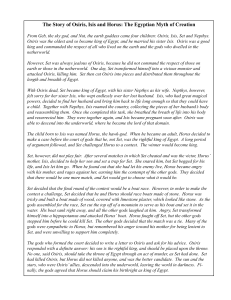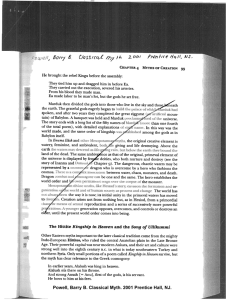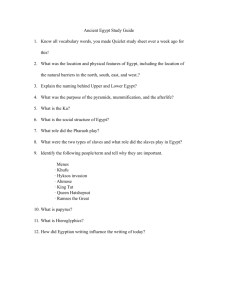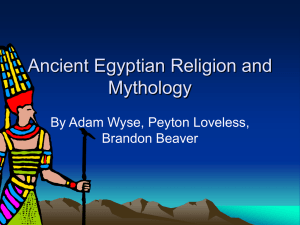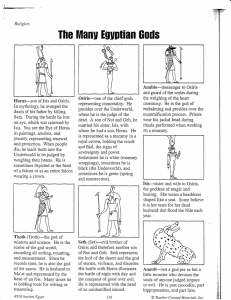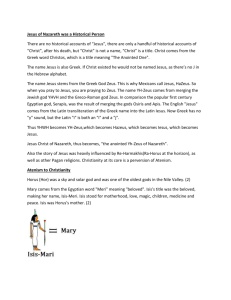classroom tutorials - Michael C. Carlos Museum
advertisement
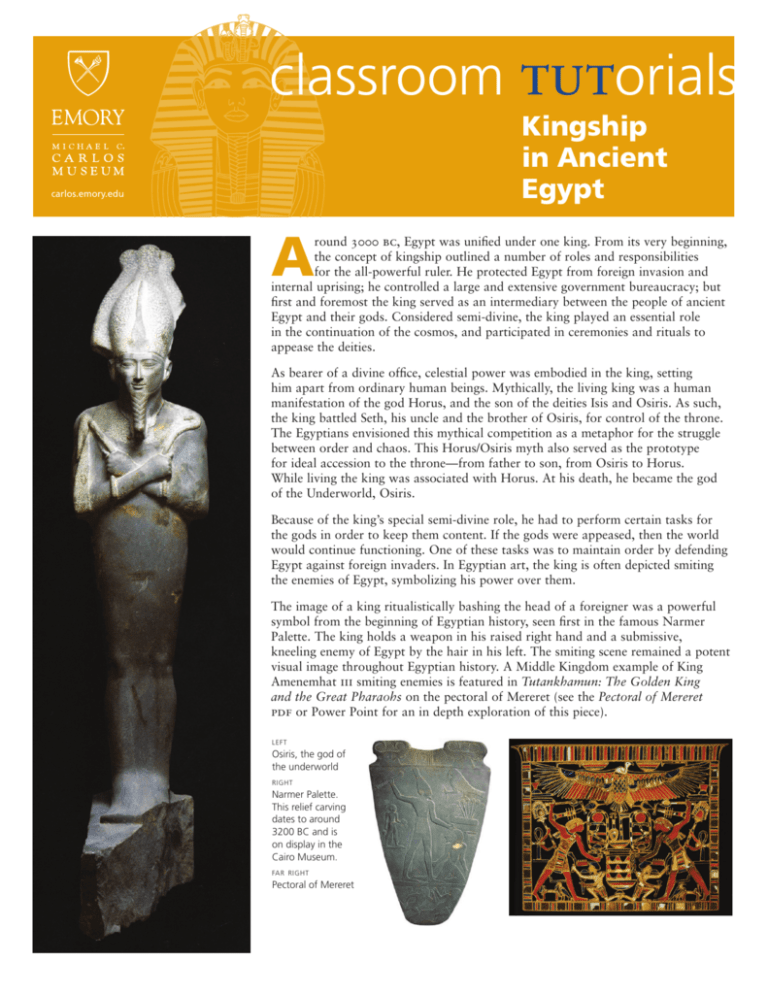
classroom tutorials Kingship in Ancient Egypt carlos.emory.edu A round 3000 bc, Egypt was unified under one king. From its very beginning, the concept of kingship outlined a number of roles and responsibilities for the all-powerful ruler. He protected Egypt from foreign invasion and internal uprising; he controlled a large and extensive government bureaucracy; but first and foremost the king served as an intermediary between the people of ancient Egypt and their gods. Considered semi-divine, the king played an essential role in the continuation of the cosmos, and participated in ceremonies and rituals to appease the deities. As bearer of a divine office, celestial power was embodied in the king, setting him apart from ordinary human beings. Mythically, the living king was a human manifestation of the god Horus, and the son of the deities Isis and Osiris. As such, the king battled Seth, his uncle and the brother of Osiris, for control of the throne. The Egyptians envisioned this mythical competition as a metaphor for the struggle between order and chaos. This Horus/Osiris myth also served as the prototype for ideal accession to the throne—from father to son, from Osiris to Horus. While living the king was associated with Horus. At his death, he became the god of the Underworld, Osiris. Because of the king’s special semi-divine role, he had to perform certain tasks for the gods in order to keep them content. If the gods were appeased, then the world would continue functioning. One of these tasks was to maintain order by defending Egypt against foreign invaders. In Egyptian art, the king is often depicted smiting the enemies of Egypt, symbolizing his power over them. The image of a king ritualistically bashing the head of a foreigner was a powerful symbol from the beginning of Egyptian history, seen first in the famous Narmer Palette. The king holds a weapon in his raised right hand and a submissive, kneeling enemy of Egypt by the hair in his left. The smiting scene remained a potent visual image throughout Egyptian history. A Middle Kingdom example of King Amenemhat iii smiting enemies is featured in Tutankhamun: The Golden King and the Great Pharaohs on the pectoral of Mereret (see the Pectoral of Mereret pdf or Power Point for an in depth exploration of this piece). left Osiris, the god of the underworld right Narmer Palette. This relief carving dates to around 3200 BC and is on display in the Cairo Museum. far right Pectoral of Mereret carlos.emory.edu classroom tutorials Kingship in Ancient Egypt Another of the king’s duties was to make offerings to the gods. Tutankhamun: The Golden King and the Great Pharaohs features a number of images of kings making such offerings. One of these is a statue of Ramesses ii offering a naos, or shrine. This depiction shows the king in a subservient pose with his arms outstretched, holding a gift for the gods. Though the kneeling gesture of the king is seemingly one of humility, the hieroglyphic inscription on the statue reveals a less humble side of Ramesses ii. The text states that three cult statues are being offered. Ramesses ii includes himself along side the gods Amun-Re and Re-Horakhty! top left above Ramesses II offering a naos. Sobekhotep VI left Relief of Horemheb A few rituals existed that affirmed the king’s role as ruler on earth. One of these was the ritual of accession to the throne. In a relief from the exhibition, Horemheb, an advisor to Tutankhamun who became pharaoh after the young king’s death, is shown wearing the Blue Crown, which was often used in coronations. While this representation of the king offering water and incense to the solar god Khepri is incomplete, enough survives to explain the scene. Notice the falcon Horus hovering above the king. Horus holds the shen, a symbol of eternity, in his talons. The hieroglyphic text under the image of the king tells us that the god Khepri grants Horemheb “the lifetime of Re and the kingship of Horus in joy,” a likely reference to his coronation ceremony. Another kingship ritual was called the heb sed. This ceremony was associated with a renewal of “royal potency and a reaffirmation of the king’s divine descent and legitimacy.” The heb sed was a jubilee celebrated after 30 years of rule of the same king, and was subsequently celebrated every two years. The activities included the king showcasing his athletic prowess by driving cattle and by running around a series of markers that symbolized the established world. Associated with this ritual is the heb sed cloak seen here in the depiction of Sobekhotep vi from the exhibition.
